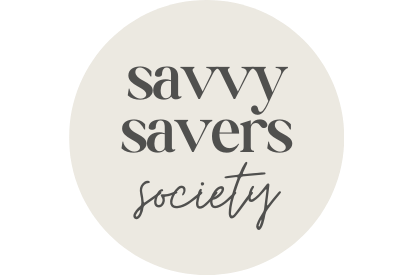Creativity is often seen as an abstract concept, but its value is tangible and profound. As you delve into your creative pursuits, it’s essential to recognize that your unique perspective and ideas hold significant worth. Your creativity is not just a hobby; it is a skill that can be cultivated, nurtured, and transformed into a source of income.
By understanding the intrinsic value of your creativity, you empower yourself to take actionable steps toward monetizing your talents. This realization can be a game-changer, allowing you to approach your work with confidence and purpose. Moreover, the world is increasingly recognizing the importance of creativity in various fields.
From art and design to marketing and technology, creative thinkers are in high demand. By acknowledging the value of your creativity, you position yourself as a valuable contributor to this landscape. You can leverage your skills to solve problems, inspire others, and create meaningful connections.
Embracing this mindset not only enhances your self-worth but also opens doors to opportunities that can lead to financial success and personal fulfillment.
Key Takeaways
- Your creativity has value, and it’s important to recognize and honor that value in your work.
- Identifying your niche and target audience is crucial for effectively reaching and engaging with the right people.
- Social media and online platforms can be powerful tools for showcasing your work and connecting with potential customers.
- Creating and selling merchandise can be a great way to expand your brand and reach a wider audience.
- Offering workshops and classes can not only generate income, but also help you establish yourself as an expert in your field.
Identifying Your Niche and Target Audience
Once you appreciate the value of your creativity, the next step is to identify your niche and target audience. This process involves introspection and research, allowing you to pinpoint what makes your work unique and who will benefit from it. Start by reflecting on your interests, strengths, and the themes that resonate with you.
What subjects ignite your passion? What styles or mediums do you excel in? By answering these questions, you can carve out a niche that aligns with your creative identity.
Understanding your target audience is equally crucial. Who are the people that would appreciate and invest in your work? Consider demographics such as age, gender, location, and interests.
Engaging with potential customers through surveys or social media can provide valuable insights into their preferences and needs. By identifying your niche and audience, you can tailor your creative output to meet their expectations, ensuring that your work not only stands out but also connects with those who are most likely to support it.
Leveraging Social Media and Online Platforms
In today’s digital age, social media and online platforms are powerful tools for showcasing your creativity and reaching a broader audience. Platforms like Instagram, Pinterest, and TikTok allow you to share your work visually, while websites like Etsy or Shopify enable you to sell directly to consumers. By establishing a strong online presence, you can engage with followers, build a community around your work, and attract potential buyers.
To effectively leverage these platforms, consistency is key. Regularly posting content that reflects your creative journey helps keep your audience engaged and invested in your work.
Additionally, consider utilizing hashtags strategically to increase visibility and reach new audiences. Engaging with other creators and participating in online challenges can also enhance your visibility while fostering connections within the creative community.
Creating and Selling Merchandise
| Product | Units Sold | Revenue |
|---|---|---|
| T-shirts | 500 | 7500 |
| Hats | 300 | 4500 |
| Mugs | 200 | 3000 |
Creating merchandise is an excellent way to monetize your creativity while expanding your brand. Think beyond traditional art prints; consider items like apparel, home decor, stationery, or accessories that feature your designs.
The key is to ensure that the merchandise reflects your artistic style and resonates with your target audience. When it comes to selling merchandise, quality matters. Partnering with reliable manufacturers or using print-on-demand services can help maintain high standards while minimizing upfront costs.
Additionally, consider setting up an online store or utilizing platforms like Redbubble or Society6 to reach a wider audience. Promoting your merchandise through social media campaigns or collaborations with influencers can further boost sales and increase brand awareness.
Offering Workshops and Classes
Sharing your knowledge through workshops and classes is another rewarding avenue for monetizing your creativity. Whether you’re an artist, writer, or musician, there are individuals eager to learn from someone with your expertise. Hosting workshops allows you to connect with others who share similar interests while providing them with valuable skills they can apply in their own creative endeavors.
To get started, consider what topics you’re passionate about teaching. Develop a curriculum that caters to different skill levels, ensuring that everyone feels included and engaged. You can host workshops in person at local community centers or art studios or opt for virtual classes through platforms like Zoom or Skillshare.
Promoting these workshops through social media and local networks can help attract participants while establishing you as an authority in your field.
Freelancing and Commissions
Freelancing offers a flexible way to monetize your creativity while working on diverse projects that excite you. As a freelancer, you have the freedom to choose which clients to work with and what types of projects to pursue. This autonomy allows you to align your work with your interests and values while building a portfolio that showcases your skills.
To get started in freelancing, create a professional portfolio that highlights your best work. Utilize platforms like Upwork or Fiverr to connect with potential clients seeking creative services. Networking within your industry can also lead to commission opportunities; don’t hesitate to reach out to businesses or individuals who may benefit from your expertise.
By delivering high-quality work and maintaining strong communication with clients, you can build lasting relationships that lead to repeat business and referrals.
Licensing Your Artwork
Licensing your artwork is a strategic way to generate passive income while retaining ownership of your creations. When you license your work, you grant permission for others to use it under specific terms while receiving royalties or fees in return. This approach allows you to reach new audiences without the need for direct sales or production.
To begin licensing your artwork, research companies or brands that align with your style and values. Create a professional portfolio showcasing pieces suitable for licensing opportunities. Consider reaching out directly to potential partners or utilizing licensing agencies that specialize in connecting artists with brands seeking unique designs.
By effectively negotiating contracts and understanding the terms of use, you can create a sustainable income stream while expanding the reach of your creative work.
Collaborating with Brands and Businesses
Collaborating with brands and businesses can elevate your creative career while providing exciting opportunities for exposure and income. These partnerships allow you to merge your artistic vision with a brand’s identity, resulting in unique products or campaigns that resonate with both audiences. Collaborations can take many forms, from co-branded merchandise to sponsored content on social media.
To initiate collaborations, identify brands that align with your values and aesthetic. Reach out with a well-crafted proposal outlining how a partnership could benefit both parties. Be open to brainstorming ideas that leverage each other’s strengths while creating something fresh and engaging for consumers.
Successful collaborations not only enhance your portfolio but also introduce you to new audiences who may become lifelong supporters of your work. In conclusion, monetizing your creativity involves understanding its value, identifying your niche, leveraging online platforms, creating merchandise, offering workshops, freelancing, licensing artwork, and collaborating with brands. Each step requires dedication and strategic thinking but can lead to fulfilling opportunities that allow you to thrive as a creative professional.
Embrace the journey ahead; the world is eager for what you have to offer!
FAQs
What is a side hustle for artists?
A side hustle for artists refers to any additional work or projects that artists take on outside of their primary artistic practice in order to generate extra income.
What are some examples of side hustles for artists?
Some examples of side hustles for artists include selling artwork online, teaching art classes or workshops, freelance graphic design or illustration work, creating and selling merchandise, and offering commission-based art services.
Why do artists pursue side hustles?
Many artists pursue side hustles in order to supplement their income from their primary artistic practice, which may not always provide a stable or sufficient source of income. Side hustles can also provide artists with opportunities to expand their skills, reach new audiences, and gain valuable experience.
How can artists find side hustle opportunities?
Artists can find side hustle opportunities by networking within their artistic community, utilizing online platforms and marketplaces to sell their work or services, reaching out to potential clients or collaborators, and promoting their skills and services through social media and other marketing channels.
What are the benefits of having a side hustle for artists?
Some benefits of having a side hustle for artists include the potential for additional income, the opportunity to diversify their artistic practice and skills, the ability to reach new audiences and markets, and the chance to gain valuable experience and connections within the creative industry.

